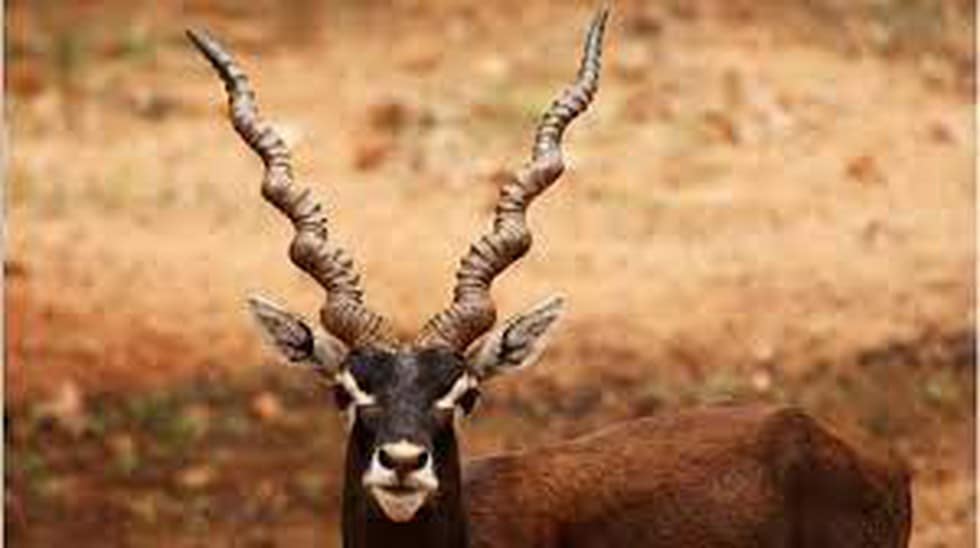Why in news?
- Researchers found that an ancestral blackbuck population first split into two groups: the northern and the southern cluster. The eastern cluster even though geographically close to the northern cluster seems to have emerged from the southern cluster.
- The study shows that despite all odds, male blackbuck appears to disperse more than expected, thus contributing to gene flow in this species.
- Females, on the other hand, appear to stay largely within their native population ranges, which the researchers inferred from unique mitochondrial signatures in each population.
- The data also showed an increasing trend in blackbuck population numbers as compared to the recent past.
Key features of blackbuck
- It is a species of antelope native to India and Nepal.
- While males have corkscrew-shaped horns and black-to-dark brown coats, the females are fawn-coloured.
- The animals are mainly seen in three broad clusters across India the northern, southern, and eastern regions.
- It is widespread in the states of Rajasthan, Gujarat, Madhya Pradesh, Tamil Nadu, Odisha, and other areas throughout peninsular India.
- Protection status:
- IUCN Red List: Least concerned.
- Wildlife Protection Act of 1972: Schedule I
- CITES: Appendix III
- Protected areas in India:
- Gir National Park, Gujarat
- Kaimur Wildlife Sanctuary, Bihar
- Kanha National Park, Madhya Pradesh
- Ranthambore National Park, Rajasthan
- Ranebennur Blackbuck Sanctuary, Karnataka
- Vallanadu Wildlife Sanctuary, Tamil Nadu
Q1) What is the mission of IISc?
IISc aims to be among the world’s foremost academic institutions through the pursuit of excellence in research and promotion of innovation by offering world-class education to train future leaders in science and technology
Source: IISc study sheds light on how blackbuck survive challenges
Last updated on June, 2025
→ UPSC Notification 2025 was released on 22nd January 2025.
→ UPSC Prelims Result 2025 is out now for the CSE held on 25 May 2025.
→ UPSC Prelims Question Paper 2025 and Unofficial Prelims Answer Key 2025 are available now.
→ UPSC Calendar 2026 is released on 15th May, 2025.
→ The UPSC Vacancy 2025 were released 1129, out of which 979 were for UPSC CSE and remaining 150 are for UPSC IFoS.
→ UPSC Mains 2025 will be conducted on 22nd August 2025.
→ UPSC Prelims 2026 will be conducted on 24th May, 2026 & UPSC Mains 2026 will be conducted on 21st August 2026.
→ The UPSC Selection Process is of 3 stages-Prelims, Mains and Interview.
→ UPSC Result 2024 is released with latest UPSC Marksheet 2024. Check Now!
→ UPSC Toppers List 2024 is released now. Shakti Dubey is UPSC AIR 1 2024 Topper.
→ Also check Best IAS Coaching in Delhi
























